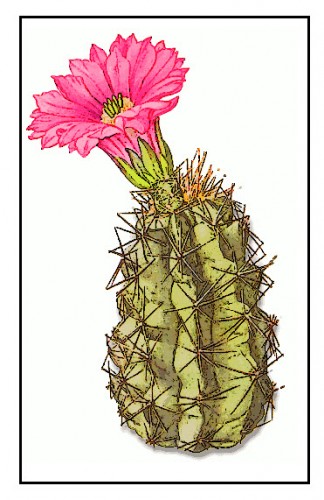 Desert Plant Adaptations and Survival
Desert Plant Adaptations and Survival
Desert plants have physical and behavioral mechanisms that help them to adapt the climate of the desert.
What is a Desert?
A desert is a place that most think of as being very hot and arid (dry). Actually, all deserts are arid, but temperature-wise there are both hot and cold deserts.
To be called a desert, a region has to have an average annual rainfall of less than 10 inches (25 cm) per year and an annual evaporation rate (measure of how much moisture evaporates from Earth’s surface each year) that is greater than its precipitation.
Structural Adaptations
Desert plants have special adaptive structures , such as thick , waxy cuticles (outer surface), reduced leaf areas or no leaves, sunken stomata and hair to reduce transpiration and conserve water.
Many cacti conduct photosynthesis in their succulent stems rather than their leaves. Other desert plants have a special type of photosynthesis called CAM photosynthesis that occurs during the night.
Xerophytes
Plants with special physical structure for surviving the dry desert climate are called xerophytes, such as cacti. Xerophytes have few or no leaves, which reduces transpiration. Transpiration is the process by which water moves from the roots to the surface of the leaves. Some transpiration occurs in the stem and flowers of some plants.
Prickly Pear Cactus are Xerophytes. The spines covering the plant surface are modified leaves that reduce water loss, conduct water, and protect the plant from herbivores (animals that eat plants), other predators and people that get too close.

Prickly Pear Cactus have shallow roots that spread out in a wide underground network. These roots absorb water as well as help to support the plant in the lose, sandy soil where they live.
Phreatophytes
Phreatophytes are plants that have adapted to arid environments by growing extremely long roots, allowing them to acquire moisture at or near the water table.
Behavioral Adaptations
Other desert plants, using behavioral adaptations, have developed a lifestyle in conformance with the seasons of greatest moisture and/or coolest temperatures. These type of plants are usually (and inaccurately) referred to as perennials, plants that live for several years, and annuals, plants that live for only a season.
Perennials
Desert perennials often survive by remaining dormant during dry periods of the year, then springing to life when water becomes available.
Big Book of Science Experiments
A book of fun informative experiments about astronomy, biology, chemistry, earth science, and physics.
(Paid Link)
